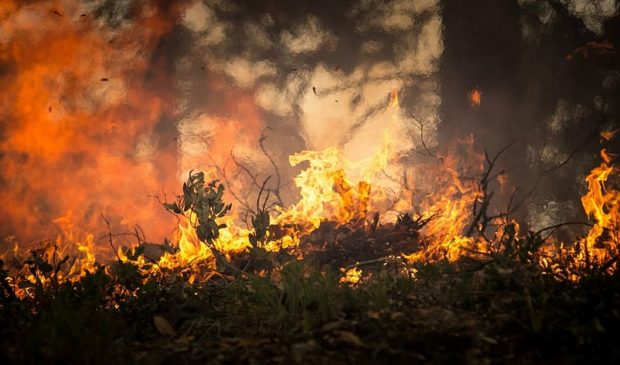Fire season may be winding down but officials urge Austinites to stay wary of wildfire
Tuesday, October 5, 2021 by
Samuel Stark A winter freeze and a wet spring may not conjure concerns of wildfires, but fire officials say the combination of those events and forecasted weather patterns create an environment ripe for more significant blazes, including in residential areas not normally considered at risk.
February’s winter storm increased the amount of leaf litter and plant debris in the area, particularly in the gutters of homes and businesses. The wet spring helped produce lush and leafy vegetation, as well as an increase in grass growth in and around Austin.
While the wet conditions were a boon in preventing wildfires over the summer, the increase in grass, now turning golden-brown as hot and dry weather takes hold, has put fire officials on alert for the upcoming seasons.
“We’re coming up on what would historically be the end of our Central Texas fire season,” said Justice Jones, wildfire mitigation officer for the Austin Fire Department. “But we don’t let our guard down anymore. It’s a year-round event. It’s no longer a seasonal thing.”
Officials noted that Travis County is not experiencing the type of drought today that it did 10 years ago, when the Bastrop wildfires destroyed 1,673 homes and left two people dead. Then, the area had suffered “exceptional drought conditions,” according to the U.S. Drought Monitor.
However, the unique combination of leaves, debris and drying flora poses a heightened threat – one that might not be as striking as the drought conditions a decade ago.
Because of shifting climate patterns, Austin is beginning to see dry weather akin to that in the West, where wildfires have ravaged more than 5 million acres this year. The average rainfall around the area has hovered around “respectable” levels so far this year, said meteorologist Troy Kimmel, but come August, “the spigot (rainfall) turns off.”
This may be exacerbated by developing weather events in the Pacific Ocean. According to the Climate Prediction Center, the next few months will bring a 70 to 80 percent chance of a La Niña weather pattern, which would cool the Pacific.
“And when the Pacific turns cooler,” Kimmel said, “we turn drier.”
Regardless of whether a La Niña occurs, Austin will likely see grass fires, especially in the east, Jones said. And with more grass than usual, dormant vegetation and increased winds brought by cold fronts, the conditions are ideal for a fire to start and spread.
“When we think about risk, people tend to go, ‘Oh, I see trees, I see hills, I see risk.’ The reality is the Blackland prairie, with the abundant amount of grass and brushy vegetation, has a high risk. … We see fires every winter,” Jones said. “Soon as it freezes, we tend to see more grass fires. We want people to be vigilant.”
Officials urge homeowners to consider what they can do to increase their home’s chance of surviving a fire. As innocuous as leaf litter may seem, in a fire event, leaves can act as kindling.
“My biggest concern is everyone’s gutters are a fuse right now,” Jones said. “If they haven’t cleaned them out and if you have gutters around the roof of your house, it creates a fuse around your entire roof.”
“We want people to get accustomed to integrating this into part of their general lifestyle and maintenance,” he said, “and not to take action (only) when they see something on the news or they hear about fire season, because it’s really a year-round preparedness.”
Austin Water and Austin Fire Department teamed up to establish a 10-person crew earlier this month to bolster their efforts to make forests more fire-resilient. Crew members will be targeting their mitigation efforts at wooded areas where they can have the most impact.
While fire officials strongly encourage homeowners to take action to reduce their own risk, the city continues its own fire mitigation efforts. Austinites can visit the frequently updated Austin-Area Wildfire Hub to help their community prepare for fire and to find out the risk for wildfires in their area as well as current burns across Texas.
This story was written by a journalism student at the University of Texas at Austin. The Austin Monitor is working in partnership with the UT School of Journalism to publish stories produced by students in the City and County Government Reporting course.
The Austin Monitor’s work is made possible by donations from the community. Though our reporting covers donors from time to time, we are careful to keep business and editorial efforts separate while maintaining transparency. A complete list of donors is available here, and our code of ethics is explained here.
You're a community leader
And we’re honored you look to us for serious, in-depth news. You know a strong community needs local and dedicated watchdog reporting. We’re here for you and that won’t change. Now will you take the powerful next step and support our nonprofit news organization?









